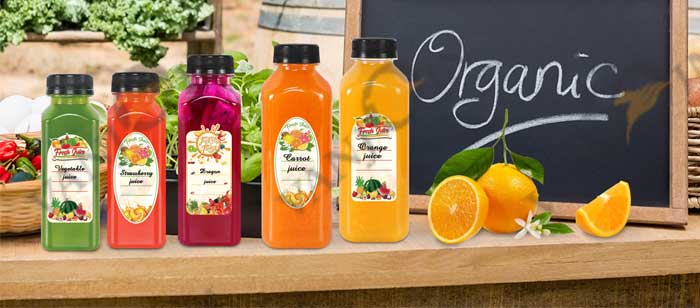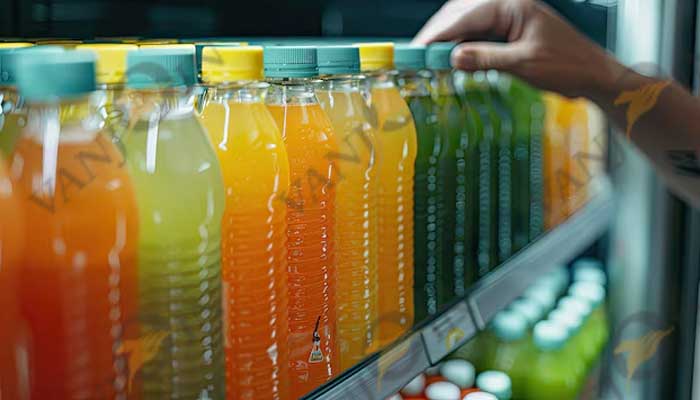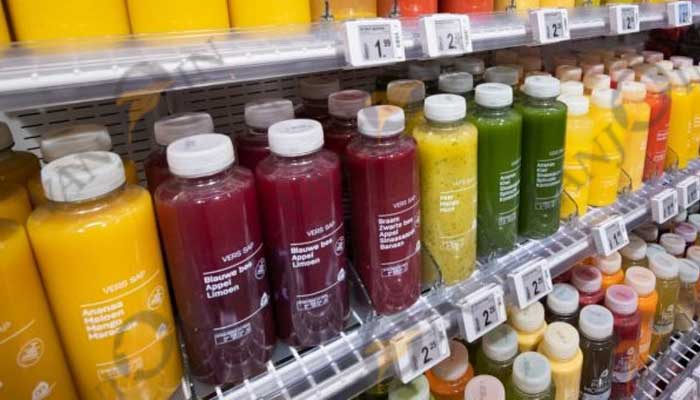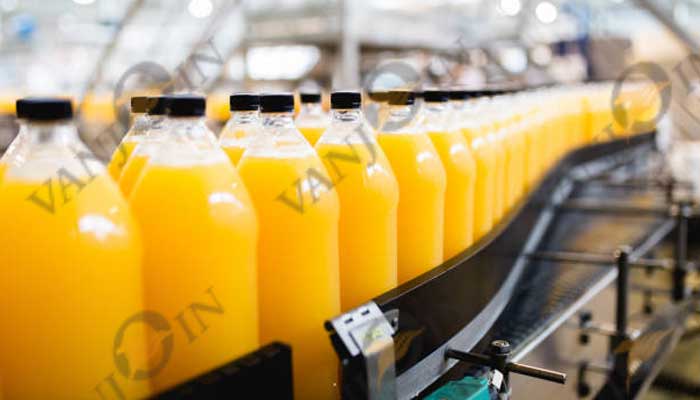What numbers of plastic are safe for beverage bottles?
Plastics are everywhere. Look around you, from your home, just how many plastic items can take notice? From food containers, household utensils to bags, kid’s toys, shower curtains, cosmetics packaging, and water bottles – plastic has become a permanent fixture in everyday lives. This has been quite alarming, especially when it comes to safety.
The news about plastics has been distressing public safety. While some are Eco-friendly, may be safe for kids but others contain harmful chemicals and cause dangerous pollution during manufacturing. People have been told to recycle plastic bottles and containers, but what will happen to the plastic if we throw it away?
To understand where these bottles end up, it is important to explore their origins. The plastic in their bodies was formed by chemically bonding oil and gas molecules together to make monomers. These monomers, in turn, were bonded into long polymer chains to make plastics in the form of millions of pellets.
These pellets were melted down at manufacturing plants and reformed into molds to create resilient material. Machines filled the bottles and then wrapped, shipped, bought, opened, consumed, and unceremoniously thrown away. As if by magic, bottles are ready to be reborn as something entirely new.
In this modern time, it’s just impossible to avoid plastics, but you can look for plastics that are safer for your family and the environment. To be healthier, many of us make a point of carrying water bottles with us everywhere we go. People buy bottled water for a variety of reasons; convenience, fashion, taste, and many more. But do you know what numbers of plastic for water bottles are safe for you?

What do Plastic Recycling Symbols Mean?
Have you ever think about the logos with numbers or recycling symbols mean at the bottom of plastic bottles and containers before? You should. They tell you what kind of plastic the product is made from. It is the key to becoming a better recycler because not all plastics are created equal. So the better you know your plastics, the safer for your family and the environment.
Some are safer than others, while the use of all plastics should be limited if at all possible. Now is the time to learn more about the various plastics you use and drink or eat every day and what impact they have on you, your family, and the environment.

The Numbers Behind Plastic Water Bottles
Every plastic container or bottle has a recycling symbol, ranging from 1 to 7, within a triangle. You may think nothing of these symbols, but they can offer a great deal of information regarding the toxic chemicals used in the plastic, how bio-degradable the plastic is, how likely the plastic is to leach, and ultimately the safety of the plastic.
If you’ve been concerned, understanding the differences between types of plastic will help you make better decisions in choosing and recycling plastics. Here is some information on the various recycling symbols and numbers. How to know which plastics are safe for you? Find out here:
Plastic #1 – PETE or PET (Polyethylene Terephthalate)
DuPont engineer Nathaniel Wyeth invented PET (Polyethylene Terephthalate) plastic bottles in the USA in 1973 and polyethylene terephthalate (PET) bottles. It’s the first plastic bottle to withstand the pressure of carbonated liquids.
PET or PETE is typically recycled into tote bags, furniture, carpet, paneling, fiber, and polar fleece. It is used to make water bottles, juice, soft drinks, mouthwash, sports drinks, and containers for condiments like salad dressing, jelly, ketchup, and jam. Polyethylene Terephthalate is considered safe, but it can leach toxic metal antimony.
Plastic #1 is intended for one-time use only. These bottles should not be reused or heated as a precaution and can be recycled once into new secondary products such as fabric, carpet, or plastic lumber. Some studies have found levels of antimony (a toxic chemical) discharge from water bottles that have been placed in the heat for prolonged times. It’s always best to ensure that your water bottles are not temperature abused, even though PETE does not contain BPA or Phthalates.
Plastic #2 – HDPE (High-Density Polyethylene)
It is considered a low-hazard plastic and has a lower risk of leaching. Plastic # 2 is the most commonly recycled plastic, and it is a relatively simple and cost-effective process to recycle plastic for secondary use. This type of plastic is very hard-wearing and does not break down under exposure to sunlight or extremes of heating or freezing.
It is used to make picnic tables, plastic lumber, park benches, waste bins, bed liners for trucks, and other products which require weather resistance and durability. Products made of HDPE are reusable and recyclable, like the stiff plastic used to make milk jugs, detergent and oil bottles, kid’s toys, and some plastic bags.
Some studies have shown that it can leach the endocrine disruptor nonylphenol (added to HDPE as a stabilizer), especially when exposed to ultraviolet light such as the sunlight and other possible stabilizer chemicals estrogen-mimicking activity.
Plastic #3 – Polyvinyl Chloride (PVC)
Polyvinyl Chloride (PVC) has toxic chemicals, a popular thermoplastic that contains high chlorine levels, which can reach up to 57%. A white, odorless, and solid plastic that is brittle and can be found on the market in pellets or white powder. It is often supplied in powder forms, and its high resistance to oxidation and degradation makes it possible to store for a long period.
PVC plastics can be found in condiment bottles, teething rings, toys, shower curtains, window cleaner and detergent bottles, shampoo bottles, cooking oil bottles, clear food packaging, wire jacketing, medical equipment, siding, windows, and piping. This type of plastic has a risk of releasing toxic breakdown products like phthalates into food and drinks. The manufacturing of PVC is known to release highly toxic dioxins into the environment.
When PVC is burned through waste incineration, car or home fires, dioxins are formed. Dioxins are known human carcinogens and persistent organic pollutants and are considered one of the most toxic types of chemicals.

Plastic #4 – LDPE (Low-Density Polyethylene)
Low-density polyethylene (LDPE) is a thermoplastic made from petroleum that can be found translucent or opaque. It is flexible and tough but breakable and considered less toxic than other plastics, and relatively safe. However, it is not commonly recycled, and this is changing in many communities today as more recycling programs gear up to handle this kind of material. LDPE plastic, when recycled, is used for plastic lumber, landscaping boards, garbage can liners, and floor tiles.
Products made using LDPE plastic are reusable but not always recyclable. Check with your local collection service if you need to to see if they are accepting LDPE plastic items for recycling. LDPE is found in juice and milk cartons (as the water-proof inner and outer layer), most plastic grocery bags, and some packaging material. Grocery store bags, plastic wrap for household use, and garbage bags. LDPE is one of the safer plastics, but recycle it and limit waste by using reusable bags, especially when shopping for groceries.
This is often found in shrink wraps, dry cleaner garment bags, squeezable bottles, and other types of plastic bags used for packaging. Most of the plastic grocery bags used in most stores today are by LDPE plastic. Also, some clothing and furniture use this type of plastic.
Plastic #5: Polypropylene (PP)
Polypropylene is used for similar applications as polyethylenes but is generally stiffer and more heat resistant. It is often used for containers filled with hot food. It has a simple chemical structure (many methyl groups of CH3 - one carbon and three hydrogen molecules), making it very flexible.
Food containers of ketchup, yogurt, cottage cheese, margarine, syrup, take-out, medicine containers, straws, bottle caps, and other opaque plastic containers, including baby bottles, are made of Polypropylene (PP). Numerous usage such as disposable diaper and sanitary pad liners, thermal vests, appliance parts, and numerous car parts (bumpers, carpets, fixtures) are made from this type of plastic.
PP is considered one of the safer plastics, but be sure to recycle if possible. Being relatively stable, although it has been shown to leach plastic additives (such as the stabilizing agent oleamide). It is generally considered a safer plastic for food and drinks usage when PP labware was used in scientific experiments (PP1). One earlier study has suggested heated PP may be linked to occupational asthma based on the exposure of a worker in a PP factory (PP2). This type of plastic is microwavable safe and dishwasher safe, and a better tip for an alternative is using glass containers to heat foods and hand wash plastic instead of using the dishwasher.
Plastic #6 – PS (Polystyrene)
Polystyrene (PS) is a petroleum-based plastic, and it can either be hard or used as Styrofoam because polystyrene is the weak base from its structure with ultra-lightweight, it breaks up easily. It is dispersed readily throughout the natural environment. An untold number of marine species have ingested this plastic with immeasurable consequences to their health. For polystyrene products, recycling is rarely applicable.
Egg containers made from Styrofoam, disposable cups and bowls, take-out food packaging, packing peanuts, and bike helmets are products made from Polystyrene, including disposable cutlery & razors, compact disc & DVD cases. Polystyrene is known to leach, which can significantly damage your nervous system and linked to cancer in your food—using plastic # 6 for hot foods and beverages, like hot coffee in a polystyrene cup, may be the worst idea of all.
Because Styrene is classified as a possible human carcinogen by the EPA and by the International Agency for Research on Cancer (IARC), a long period of exposure to small quantities of styrene can cause neurotoxic; like fatigue, nervousness, difficulty in sleeping, hematological; low platelet and hemoglobin values, cytogenetic; chromosomal and lymphatic abnormalities, and carcinogenic effects. To avoid Polystyrene contaminates, package leftover foods from a restaurant in your glass or stainless steel containers. And preferably, avoid Styrofoam cups or plates, instead use stainless steel, glass, or bamboo products, and you might bring your silverware to fast-food restaurants instead of using plastic ones.
Plastic #7 – Other (BPA, Polycarbonate, and LEXAN)
Plastic # 7 is also known by various trade names, including Lexan, Makrolon, and Makroclear. Its properties are easily molded, temperature resistance, stiffness, strength, optical clarity, and estimation that over 300 million tons of plastic are produced worldwide. Nearly all of it is made from oil.
Plastic #7 can be found in sunglasses, iPod cases, computer cases, nylon, 3- and 5-gallon water bottles, and bullet-proof materials, and it is recycled into plastic lumber and other custom-made products. Some of the greatest concerns surround early-life, in utero exposure to bisphenol compounds, which can lead to chromosomal errors in the developing fetus, causing spontaneous miscarriages and genetic damage. However, the evidence is also very strong, showing that these chemicals influence adults and children too, thus leading to decreased sperm quality, early puberty, stimulation of mammary gland development, disrupted reproductive cycles and ovarian dysfunction, cancer, and heart disease, among numerous other health problems.

In the water, on-air, and land, plastic water bottles are all around us. It is very easy to grab when you need water to quench your thirst wherever you are: at the office, in the gym, and even at the beach. Even though plastic water bottles are undeniably useful, these are dangerous because plastics are made of substances and harmful chemicals that are not recyclable and can cause damage to the environment. Therefore, you must always steer clear of plastics when doing groceries or making choices for your kids’ lunches. You would never want your children to swallow chemicals, do you?
Regardless of what plastic you use, not all plastics are created equal. Thus it is imperative to avoid exposing your plastics to high temperatures (microwave, dishwasher) and use mild detergents for cleaning. There is no guarantee that plastics will not leach out harmful chemicals. The plastics industry has conformed to regulations by applying the required codes to consumer products. Still, it is up to individuals, the consumers, the moms to read and understand the codes. People can best use plastics to their advantage while minimizing the health and disposal issues that may otherwise arise by understanding these simple classifications.
Related Information
